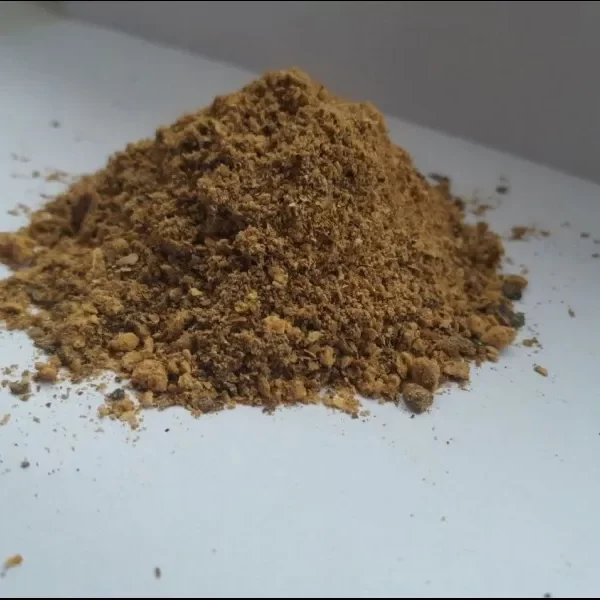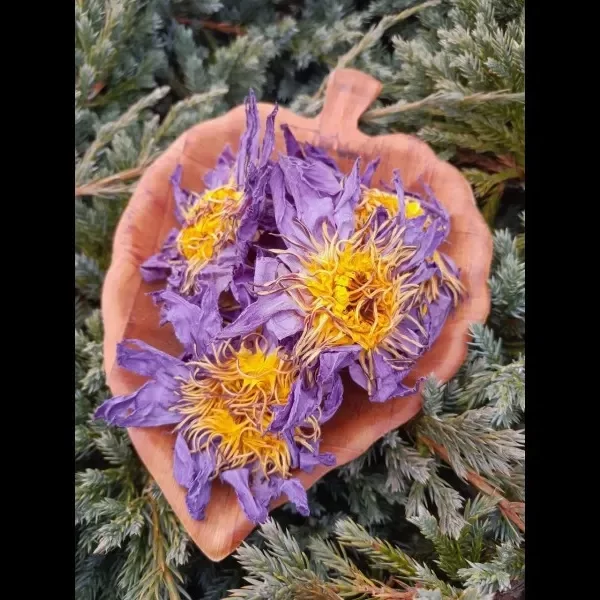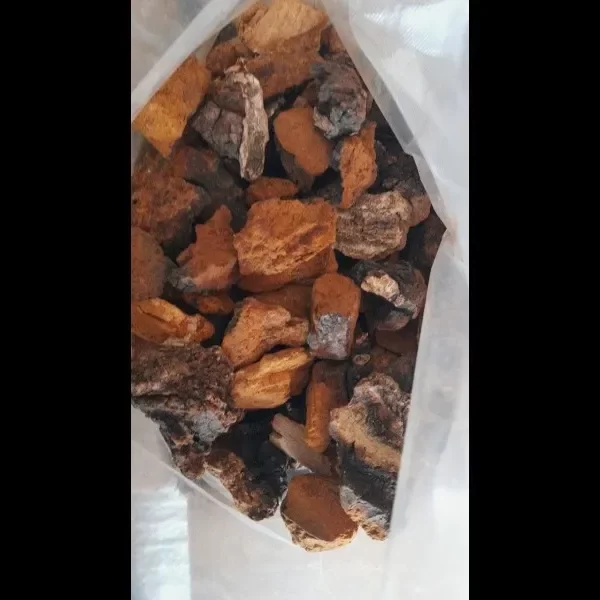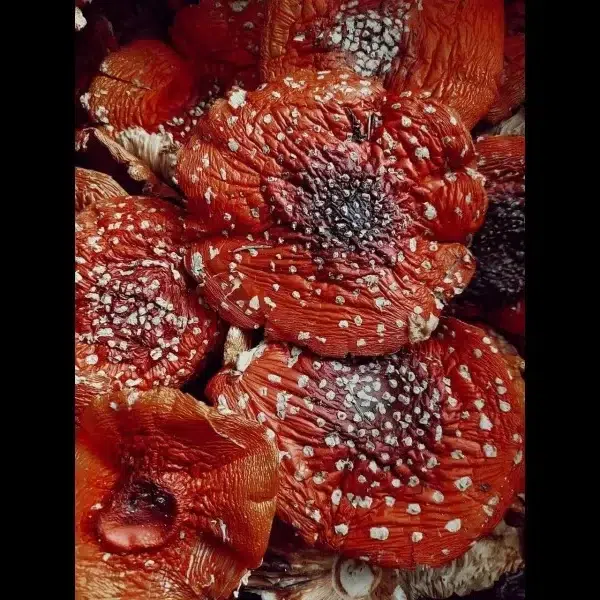The blue lotus (Nymphaea caerulea), a plant revered since ancient times, especially in Egyptian culture, is valued for its distinctive properties and uses in traditional practices. Known for its potential to promote relaxation and emotional balance, the blue lotus is used today in various forms, including teas, extracts, and tinctures. This article examines the blue lotus’s historical relevance, active compounds, and current scientific insights into its properties, potential benefits, and safety considerations.
Active Compounds in Blue Lotus and Their Potential Effects
The primary bioactive compounds in blue lotus, apomorphine and nuciferine, are responsible for its noted properties:
- Apomorphine acts as a non-selective dopamine receptor agonist, engaging with dopamine pathways in the brain. This interaction suggests possible applications in enhancing mood and motor function. Apomorphine has historically been examined for conditions such as erectile dysfunction and addiction and is currently researched for its potential role in neurodegenerative conditions, including Parkinson’s and Alzheimer’s disease.
- Nuciferine exhibits partial agonist activity at dopamine receptors and antagonistic effects at various serotonin receptors. This dual activity may support relaxation and has been explored for vascular health, particularly concerning conditions involving abnormal vasoconstriction.
While these compounds exhibit potential in preliminary studies, blue lotus products are not FDA-approved for medical use, and existing research is limited.
Antioxidant Properties and Health Potential of Blue Lotus
Blue lotus contains antioxidants, including flavonoids, quercetin, kaempferol, and myricetin, which are recognized for their role in combating oxidative stress and reducing the impact of free radicals. These antioxidants are associated with general cellular protection, potentially aiding in wellness by addressing oxidative stress, a contributor to various chronic conditions. However, while antioxidant activity is a key area of interest, no studies have directly connected blue lotus to measurable health outcomes related to chronic diseases.
Traditional uses of blue lotus, such as promoting sleep quality, emotional well-being, and sexual health, are grounded in historical context, though these effects have yet to be substantiated by robust scientific research.
In summary, while blue lotus continues to be explored for its potential properties, further studies are essential to better understand its bioactive compounds and their applications.
Blue Lotus Legal Status, Safety, and Consumption Methods
The blue lotus (Nymphaea caerulea) is not classified as a controlled substance by the Drug Enforcement Administration (DEA), which allows it to be legally sold in most U.S. states. However, the Food and Drug Administration (FDA) has not approved blue lotus for human consumption, and as a result, it is unregulated. This lack of FDA regulation has led to variability in the purity and ingredients of blue lotus products on the market. In Louisiana, the sale and possession of blue lotus are restricted, reflecting a cautious approach not seen in other states. Additionally, the Department of Defense lists blue lotus on its Prohibited Dietary Supplement Ingredients List, barring use by military service members due to safety concerns and the potential presence of unregulated substances in some products.
Safety Profile and Potential Side Effects of Blue Lotus
Blue lotus is generally regarded as safe when used in small amounts, although comprehensive research on its safety profile remains limited. Commonly reported side effects include mild dizziness, nausea, vomiting, and dry mouth. More pronounced reactions, such as visual and auditory disturbances, paranoia, or slurred speech, have been associated with higher doses or rapid-absorption methods, including smoking or vaping. In rare cases, severe symptoms like seizures have been reported. Given these risks, individuals are advised to consult a healthcare professional before using blue lotus, especially those who are pregnant, breastfeeding, or managing health conditions.
Blue Lotus Use in Ancient Civilizations
The blue lotus (Nymphaea caerulea) has held significant cultural and medicinal value across various ancient civilizations, notably in Egypt, where it symbolized life and regeneration. In ancient Egypt, the blue lotus was frequently used in religious and spiritual contexts, with pharaohs and priests incorporating it into rituals and preparations to facilitate mental clarity and connection with the divine. It was believed to foster introspection and a heightened state of awareness, becoming central in ceremonies that aimed to connect with the afterlife.
The influence of the blue lotus extended beyond Egypt to cultures such as Greece, India, and other parts of Asia. Around 300 BCE, the plant became integrated into Greek practices associated with the deities Isis and Serapis. In India, known as “Padma” in Sanskrit, the blue lotus is a powerful symbol in Hindu and Buddhist traditions, representing purity and spiritual enlightenment. Its presence in religious texts and art highlights its historical relevance as a symbol of transcendence and inner awakening.
Cultural and Spiritual Significance of Blue Lotus
The blue lotus carries profound cultural and spiritual symbolism, prominently featured in Egyptian mythology as a representation of rebirth, associated with deities like Ra and Osiris. Egyptian texts, including the Book of the Dead, reference the plant’s role in religious rites, where it was believed to aid in spiritual progression.
In Hindu and Buddhist traditions, the blue lotus is depicted in art as a symbol of purity and wisdom, often associated with deities in meditative postures. The flower’s resilience, blooming in murky waters yet emerging unsoiled, is symbolic of spiritual growth and detachment from worldly distractions, making it a longstanding symbol in meditation and introspection practices.
Forms of Blue Lotus Consumption
Blue lotus can be prepared and consumed in several forms, each offering distinct experiences and effects. The most common methods are:
- Tea: Steeping dried blue lotus flowers in hot water provides a gentle method of consumption, often used for relaxation.
- Tinctures: Created by steeping the plant in alcohol, tinctures deliver concentrated amounts of active compounds and are typically taken in small doses.
- Smoking or Vaping: Known for faster effects, this method can intensify the plant’s impact but may increase the risk of adverse reactions.
It is recommended to start with a low dose to gauge individual responses and to avoid combining blue lotus with other substances.
Therapeutic Applications of Blue Lotus
Blue lotus is widely used to promote relaxation and improve sleep quality. Its potential calming effects on the nervous system make it a choice for natural stress relief. Initial studies suggest that compounds within blue lotus may have anxiolytic properties, offering mild support for stress and anxiety management, though more research is needed to confirm these effects.
Sexual Health and Performance
In traditional medicine, blue lotus has been reputed for its aphrodisiac properties, potentially enhancing sexual health and performance. The compound apomorphine found in blue lotus may stimulate dopamine pathways, possibly supporting conditions related to erectile function and libido. By promoting vasodilation in smooth muscle tissues, it could contribute to improved circulation, further supporting these traditional claims.
Mood Enhancement and Potential for Addiction Treatment
Blue lotus has been associated with subtle mood enhancement, contributing to an improved sense of well-being. Apomorphine and nuciferine, active compounds in the plant, may offer therapeutic potential for mood and mental health support. Apomorphine is under research for its antidepressant properties, while nuciferine may show promise as an adjunct for antipsychotic treatments. These compounds provide potential for further exploration in supporting mental health and well-being.
Conclusion
In exploring the fly agaric mushroom, we uncover its rich cultural, historical, and scientific dimensions, showing Amanita muscaria as a complex symbol of both fascination and caution. Its history reveals an intricate relationship with humanity, from revered cultural roles to modern scientific curiosity, underscoring the need for careful handling. This journey highlights the mushroom’s significance beyond folklore, prompting discussions on cultural heritage, medicinal potential, and safe study practices.
The vivid image of Amanita muscaria invites respectful study, appreciating its role in human history while advancing scientific inquiry. This balanced perspective reaffirms the mushroom’s place as a symbol of natural wonder and scientific exploration.
What are blue lotus spiritual applications?
Historically, the blue lotus was used in Egypt as a means of enhancing spiritual practices, often as a part of traditional ceremonies to support relaxation and introspective states. In religious contexts, it was viewed as a plant capable of fostering mental clarity and connection to the divine. Its use as an entheogenic substance reflects its association with altered states of consciousness in spiritual and religious experiences.
How does the blue lotus affect your body?
The blue lotus, often regarded for its potential calming effects, has been traditionally used to support sleep quality, alleviate stress, enhance mood, and potentially promote circulation. Although it is legally available in the U.S., the FDA does not approve or regulate it for human consumption, which underscores the importance of cautious and informed use.
What are blue lotus the psychological impacts of the blue lotus?
Primarily utilized for relaxation and as a sleep aid, the blue lotus may support mood balance and mild euphoria. In larger amounts, it can have more pronounced effects, potentially leading to mild perceptual changes due to its aporphine alkaloids, particularly apomorphine and nuciferine, which interact with the brain’s receptors.
What purposes did the Egyptians have for using the blue lotus?
In ancient Egypt, the blue lotus flower played a role in ceremonies and rituals, valued for its potential to promote feelings of well-being and calm. Historical accounts suggest it was used to evoke a mild sense of euphoria, likely to support relaxation and mental clarity in social and spiritual gatherings.
References
[1] – https://www.jodie-louise.com/awaken-your-intuition-with-blue-lotus/
[2] – https://www.healthline.com/nutrition/blue-lotus-flower
[3] – https://wisdom.thealchemistskitchen.com/blue-lotus-flower-of-intuitive-ascension/
[4] – https://www.healthline.com/nutrition/blue-lotus-flower
[5] – https://www.acslab.com/wellness/blue-lotus-history-effects-products
[6] – https://etherealgolddispensary.com/blogs/news/what-is-blue-lotus-flower-the-complete-guide
[7] – https://www.ancient-origins.net/ancient-places-africa/blue-lotus-0017940
[8] – https://organicindiausa.com/blog/all-about-the-ancient-blue-lotus/
[9] – https://www.acslab.com/wellness/blue-lotus-history-effects-products
[10] – https://wisdom.thealchemistskitchen.com/blue-lotus-flower-of-intuitive-ascension/
[11] – https://www.kavaluv.com/blog/the-enigmatic-blue-lotus-unraveling-its-mystique-and-cultural-significance
[12] – https://wanderingkamya.substack.com/p/what-is-blue-lotus-the-mystical-spiritual
[13] – https://www.ncbi.nlm.nih.gov/pmc/articles/PMC5638439/
[14] – https://pubmed.ncbi.nlm.nih.gov/28266899/
[15] – https://www.researchgate.net/figure/Concentrations-of-apomorphine-and-nuciferine-Sample-n-3-mean-SD-Apomorphine_tbl1_314290185
[16] – https://www.healthline.com/nutrition/blue-lotus-flower
[17] – https://www.acslab.com/wellness/blue-lotus-history-effects-products
[18] – https://www.opss.org/article/blue-lotus-prohibited-use
[19] – https://www.healthline.com/nutrition/blue-lotus-flower
[20] – https://www.health.com/blue-lotus-flower-8610147
[21] – https://www.clinikally.com/blogs/news/blue-lotus-flower-unfolding-its-blooming-impact-on-skincare
[22] – https://academic.oup.com/milmed/article/188/7-8/e2689/6338457
[23] – https://www.opss.org/article/blue-lotus-prohibited-use
[24] – https://www.fda.gov/inspections-compliance-enforcement-and-criminal-investigations/warning-letters/lotus-herbal-supplements-608658-07062020
[25] – https://academic.oup.com/milmed/article/188/7-8/e2689/6338457
[26] – https://www.health.com/blue-lotus-flower-8610147
[27] – https://www.webmd.com/vitamins/ai/ingredientmono-124/lotus
[28] – https://www.healthline.com/nutrition/blue-lotus-flower
[29] – https://doubleblindmag.com/blue-lotus/
[30] – https://www.acslab.com/wellness/blue-lotus-history-effects-products
[31] – https://www.healthline.com/nutrition/blue-lotus-flower
[32] – https://www.health.com/blue-lotus-flower-8610147
[33] – https://the-qi.com/blogs/journal/unlocking-the-secrets-of-blue-lotus-benefits-side-effects-and-more
[34] – https://www.health.com/blue-lotus-flower-8610147
[35] – https://www.healthline.com/nutrition/blue-lotus-flower
[36] – https://www.ncbi.nlm.nih.gov/pmc/articles/PMC6699280/
[37] – https://www.samhsa.gov/find-help/national-helpline
[38] – https://www.health.com/blue-lotus-flower-8610147
[39] – https://academic.oup.com/milmed/article/188/7-8/e2689/6338457
[40] – https://www.healthline.com/nutrition/blue-lotus-flower
[41] – https://www.acslab.com/wellness/blue-lotus-history-effects-products
[42] – https://www.euphoricherbals.com/blogs/blog/blue-lotus






